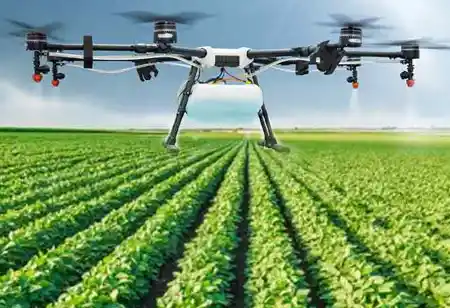Thank you for Subscribing to Agri Business Review Weekly Brief
Management at the regional and farm-scale can enhance the value of three grassland ecosystem services

By
Agri Business Review | Tuesday, May 25, 2021
Stay ahead of the industry with exclusive feature stories on the top companies, expert insights and the latest news delivered straight to your inbox. Subscribe today.
Focusing policy on landscape-scale management and farmer management cooperation provides a realistic option for maintaining agricultural intensity while preserving environmental services and biodiversity.
FREMONT, CA: Grasslands make up a significant portion of the world's agricultural land. They play an essential role in global food security, and grassland ecosystems contribute to human well-being by providing various ecosystem services such as carbon sequestration, pollination, and habitat preservation. As a result, grassland management significantly impacts global agriculture's long-term viability. However, there are numerous trade-offs in providing grassland ecosystem services, such as fodder and habitat preservation. It is believed that spatially tailored policy tools that incentivize how farmers manage their grasslands while accounting for environmental variables on a regional or landscape scale will help to boost ecosystem service provision. Despite this, most governmental incentives to support ecosystem services focus on farmers' management. Focusing policy on landscape-scale management and farmer management cooperation provides a realistic option for maintaining agricultural intensity while preserving environmental services and biodiversity.
We look at the economic value trade-offs between marketable and non-marketable ecosystem services and the cost inefficiencies caused by political incentives aimed at supporting grassland conservation on regional or landscape scales. We present a bio-economic modeling approach that explicitly addresses farm-individual restrictions when assessing possible economic gains from spatial land use targeting on regional or landscape scales. More specifically, we account for private and public services from grasslands in our bio-economic assessment of three grassland ecosystem services on a regional scale, including farm-individual production restrictions. We focus on forage provision, which is the foundation for ecosystem services related to livestock production, carbon sequestration as an indicator of climate regulation services, and the maintenance of habitats necessary for sustaining species populations, using the CICES (Common International Classification of Ecosystem Services) classification system. Our model is parameterized using data from two meta-studies on the provision and valuation of grassland ecosystems. By explicitly incorporating biophysical and willingness to pay estimations for distinct grassland types in our valuation, we go beyond current research that includes opportunity costs in the computation of trade-offs. Two research questions are addressed. First, in a multifunctional grassland region, how do space and changing pricing affect the economic value of forage provision, carbon sequestration, and habitat maintenance? Second, how does the size of the targeted policy area, ranging from single farms to regional scales, affect the cost-effectiveness of spatially targeted policy interventions?
To answer these concerns, we combined the findings of two grassland meta-regression analyses, which give empirical data on ecosystem services provided by various grassland types and their economic value. We build a three-step spatially explicit bio-economic simulation approach based on this data. We calculate ecosystems service provision (i.e., related to forage provision, carbon sequestration, and habitat maintenance) from permanent grasslands in biophysical units using farm and spatially detailed census data for 556 farms with animal husbandry and 19′000 farmland parcels in a Swiss case study region of 791 km2. The case study region's scale enables a range of landscape archetypes ranging from high-intensity livestock farming to low-intensity grassland areas.





